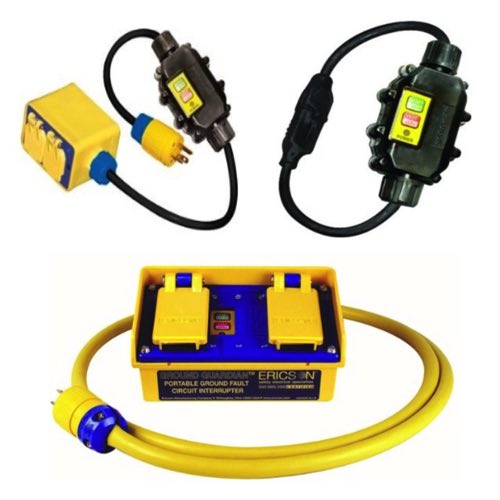Portable GFCIs

Ground Fault Circuit Interrupters, known as GFCIs, are critical to electrical safety. They cut off power within milliseconds of a ground fault, making them perfect for the temporary power applications you find in construction and maintenance. Indeed, GFCIs are mandated by OSHA in most power-tool use situations, but even the best GFCIs are pretty much useless if you don't have a way to plug them into a circuit. That's where the portable power GFCI comes in. It allows you to use power tools in even the most remote, temporary job sites while still protecting you from deadly electrical hazards.
Reliability and user convenience are the cornerstones of the design of portable GFCIs. Plug-and-play functionality allows them to be easily integrated into existing setups. Tools and lighting use a safeguarded power supply that continuously monitors the current and shuts down power that is to be used only in fault-free conditions. And you can count on most of them to do just that. Advanced features—like the fault status indicator—make these devices even better at what they do.
More Information about Portable GFCIs
Ensuring electrical safety in environments that are prone to moisture and heavy usage requires more than just circuit breakers, and that's where the versatile and reliable portable GFCI comes in. Meeting NEC 2014 Articles 26 and 27 and UL 943, the portable GFCI has been designed and constructed to protect you and your work environment from dangerous ground faults. And unlike other GFCI devices, which are often installed in stationary work environments, the portable GFCI allows you to take your protection with you wherever you go.
FAQs
Do OSHA requirements for portable GFICs include dual indication lights and automatic reset?
OSHA requirements for portable GFCIs do not specifically mandate dual indication lights or automatic reset features, but these enhancements are often included in models to improve usability and safety compliance.
Do portable GFICs come with a variety of cord lengths and ratings?
Yes, portable GFCIs are available with a variety of cord lengths and ratings to accommodate different power requirements and applications.
Breakers vs Fuses
Fuses
Fuses are safety devices that are intended to provide protection to both equipment and people in the event of a power surge or an overcurrent situation. A fuse can provide this protection by using a small piece of wire that is sacrificial, and is intended to burn up when too much current is passed through it. When this happens, the fuse eliminates the flow of electricity in that circuit until it is replaced. The size and type of wire that is used in the fuse will dictate how much current can pass through that individual fuse. So the main thing to remember is, when a fuse blows, it must be replaced and cannot be reused.
Circuit breakers
Circuit breakers are intended to be reused after they are “tripped” during a power surge or an overcurrent situation. Much like fuses, circuit breakers are designed to trip at a certain current level. This is intended to protect both equipment and anyone in the area of that particular circuit. Circuit breakers can be found in just about any variation from single phase, low current applications to three phase, and high current applications.
As a general rule: fuses are more simplistic and reliable. They cost less initially and are better suited for individual circuit protection. However, they can create more cost over time with each use and may create hazards due to the exposed connection points. Whereas circuit breakers offer better branch circuit protection and do not need to be replaced after each use. They are more expensive initially and, because of their complexity, are more prone to failure over time.

